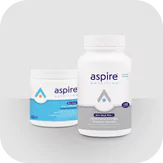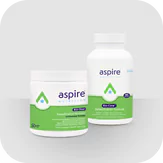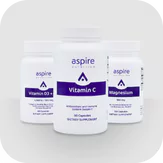Introduction
Picture this: You're at a summer barbecue. Your child has hands over ears and is trying to block the noise. The other kids are running around, but yours is on the verge of a meltdown.
Sound familiar? If you're parenting a child with autism, you know that summer can bring a unique set of challenges.
While other families are posting idyllic vacation pics on Instagram, you're just trying to survive the day.
But what if I told you that this summer could be different?
What if I told you that you could unlock calmer days, happier memories, and even some of that elusive "summer magic"?
Your Roadmap to a Thriving Summer
As an autism dad, I've seen firsthand how the unique challenges of summer can wreak havoc on our kids' well-being (and our own!). But I've also discovered a powerful tool that can help turn the tides: the 2R Protocol.
If you're not familiar with it, the 2R Protocol is a holistic approach to supporting children with autism by focusing on two key areas:
- Removing triggers that make symptoms worse
- Repair the body by giving it the nourishment and support it needs to preform at its best
The 2R Protocol has helped countless families experience more calm, connection, and progress. It supports children with autism by addressing the root cause of many symptoms – the gut-brain connection.
Your Child's Second Brain

Did you know that your child has a second brain? It may sound surprising, but it's true – and it's right in the gut.
Scientists often refer to the gut as the "second brain" because it contains a complex network of neurons that communicate directly with the brain in our head.
And to understand how the 2R Protocol works, it's essential to grasp the gut-brain connection and its significance in autism.
Imagine trillions of tiny organisms living within your child's digestive tract – that's the microbiome. While we often associate bacteria with illness, many of these bacteria are good.
They help digest food, make nutrients, and even shape brain growth.
But in many kids with autism, the good and bad bacteria are out of balance. This is called dysbiosis. And it can cause a "leaky gut." What’s a leaky gut?
Picture this: Your child's gut lining is like a big net. When the gut is leaky, the web has holes. These "holes," allowing toxins, partially digested food, and bacteria to "leak" through.

The consequences of leaky gut are far-reaching:
- Inflammation: When foreign substances leak into the bloodstream, the immune system launches an inflammatory response that can spread throughout the body, including the brain. This can become chronic and have long lasting effects.
- Nutrient deficiencies: A damaged gut lining can impair the absorption of essential nutrients, leading to deficiencies that impact brain function and development.
- Behavioral challenges: The gut-brain axis, a complex communication network between the digestive system and the brain, means that gut dysfunction can manifest as behavioral symptoms such as irritability, anxiety, and difficulty with focus and social interaction.
Now that we've seen how a leaky gut can contribute to autism symptoms, let's explore how the 2R Protocol directly addresses this issue to bring about positive changes for our children.
The Power of the 2R Protocol
At its core, the 2R Protocol is about removing triggers that worsen autism symptoms. Then repairing the body with nourishing foods, supplements, and lifestyle practices that support optimal health and development.
The protocol has proven effective for numerous families, leading to improvements in areas such as:
- Digestive function
- Sleep quality
- Focus and attention
- Language and communication
- Social engagement
- Emotional regulation
- Overall family quality of life
This is the transformative power of the 2R Protocol. And summer is the perfect time to put it into action!
Step 1: Remove - Eliminating Summer-Specific Triggers
The first step of the 2R Protocol involves identifying and eliminating triggers that can exacerbate autism symptoms. During the summer months, there are several key areas to focus on:
Hidden Dangers in Summer Treats
We all know summer is full of treats. Ice cream, popsicles, lemonade stands – they're everywhere! And while these treats are tempting, they can wreak havoc on our kids' tummies.
Here's why: Sugar acts like rocket fuel for the "bad" bacteria in the gut. It can disrupt the delicate microbial balance we're working so hard to cultivate.
Also, those brightly colored popsicles and candies might look appealing, but they often contain artificial dyes and flavors that can irritate sensitive tummies.
And processed foods, a common go-to during busy summer days, are often loaded with preservatives and additives that can disrupt the delicate balance of gut bacteria.
What’s more, gluten (found in wheat, barley, and rye) and dairy are common gut irritants. Summer barbecues and picnics can be filled with gluten-containing buns, pasta salads, and dairy-laden treats.

But don't worry, we've got this! With a little prepping and creativity, you can help your child navigate the minefield of summer treats and keep their gut health on track. Here are some strategies to try:
Communicate with the Host:
Before parties, reach out to the host and let them know about your child's dietary needs. Most people are more than happy to accommodate, especially if you give them a heads-up.
Suggest bringing a dish or two that you know your child can enjoy. This not only ensures they have something safe to eat but also takes the pressure off the host.
Pack a Cooler:
Pack a cooler with your child's favorite 2R-approved snacks and meals. This ensures your child always has safe and appealing options, no matter what temptations arise.
Role-Play Scenarios:
Role-playing can work wonders. Before the event, practice polite ways for your child to decline offered foods.
Simple phrases like, "No, thank you, I'm full," or "I have my own special treats," can prevent hurt feelings and keep your child comfortable.
When Things Get Overwhelming:
Of course, even with the best-laid plans, unexpected exposures can happen. That's why it's crucial to have an exit strategy.
Have a plan in place for when your child starts to feel dysregulated. This might mean taking a quiet walk, doing some deep breathing, or even leaving the event early. Remember, your child's well-being is more important than any social obligation.
But beyond the tempting treats at summer gatherings, hidden dangers lurk in seemingly harmless places. Let's uncover the environmental triggers that could be impacting your child's health and learn how to minimize their effects.
Choosing the Safest Fruits & Veggies
Did you know that many conventional fruits and veggies are doused in gut-disrupting pesticides? These chemicals can sneak past the leaky gut lining and wreak havoc on your child's microbiome and brain.
The EWG's Dirty Dozen™ – the 12 crops with the highest pesticide residue – are especially important to avoid or buy organic:
1) Strawberries, 2) Spinach, 3) Kale, Collard & Mustard Greens, 4) Grapes, 5) Peaches, 6) Pears, 7) Nectarines, 8) Apples, 9) Bell & Hot Peppers, 10) Cherries, 11) Blueberries, 12) Green Beans
On the flip side, the EWG's Clean 15™ – produce with the lowest levels of pesticide residue – are generally safer to consume, even if not organic:

In addition to choosing organic and consulting the Clean 15 ™, there are other practical steps you can take to minimize your child's pesticide exposure:
Thoroughly wash all fruits and vegetables before consuming, even if they're organic. Soaking produce in a solution of water and white vinegar can help remove residues.
You can also shop at local farmers' markets and talk to growers about their pesticide use. Many small-scale farmers use minimal or no pesticides, even if they're not certified organic.
Avoiding Harmful Chemicals with Smart Summer Choices
We slather on sunscreen and bug spray to protect our kids from the elements, but did you know that some of those very products could be harming their gut health? It's true!
Many conventional sunscreens and insect repellents contain chemicals that can disrupt the delicate balance of gut bacteria.
In fact, certain chemical filters found in sunscreens, like oxybenzone and octinoxate, have been linked to hormone disruption and potential gut microbiome imbalances. What’s more, many insect repellents contain DEET, a chemical that, while effective, can be harsh on sensitive skin and may have negative impacts on gut health.
But don't sweat it (pun intended!), there are plenty of safer alternatives to keep those little ones protected:
Look for mineral-based sunscreens with zinc oxide or titanium dioxide as the active ingredients. They are classified by the FDA as safe and effective. They provide broad-spectrum protection without the potentially harmful chemicals.
Sunscreens made with these mineral active ingredients generally score well in the Environmental Working Group’s Guide to Sunscreens. They offer strong sun protection with few health concerns and don’t easily break down in the sun.

Don't be fooled by fancy marketing terms like "all natural." Always check the ingredient list to make sure it's free of oxybenzone, octinoxate, and other chemical filters.
For mosquitos and other bugs, explore essential oil-based repellents. Citronella, lemongrass, and peppermint oil are known to repel pesky insects.
You can even make your own bug spray by mixing a few drops of essential oils with water or a carrier oil like witch hazel.
With these simple swaps and safer products, you can protect your child from the elements without compromising their gut health. It's a win-win!
And now that we've cleared out those summer triggers, it's time for the fun part: filling our kids' plates and lives with nourishing foods and practices that support their overall well-being.
Step 2: Repair - Nourishing the Body and Brain
The second part of the 2R Protocol focuses on repairing the body by giving it the nourishment it needs to perform at its best.
Boosting Health with Essential Nutrients
We all know the saying "you are what you eat." But for children with autism, it might be more accurate to say "you feel what you eat."
The gut-brain connection is real, folks. What goes in our kids’ belly can change their mood and behavior in big ways.
That's why sticking to a nutrient-dense, 2R-approved diet is crucial during the summer months (and all months, really). Focus on whole, unprocessed foods, including:
- Organic Grass-fed meats
- Wild-caught fish
- Organic Pasture-raised eggs
- Organic fruits and vegetables
- Healthy fats like avocado, coconut oil, and extra-virgin olive oil
Incorporate gut-healing superfoods such as:
- Bone broth: Rich in amino acids and collagen that support the gut lining
- Fermented foods: Sauerkraut, kimchi, and coconut yogurt that contain beneficial bacteria
- Healthy fats: Omega-3s in fish and seeds reduce inflammation
But how can you make gut-healthy eating feel fun and festive, rather than restrictive? Try these tips:
Take advantage of summer's bounty by focusing on fresh, seasonal produce.
Hit up your local farmer's market and let your child pick out a new fruit or veggie to try each week. Rainbow chard, heirloom tomatoes, watermelon radishes - the possibilities are as colorful as they are delicious.
Get creative with gut-friendly summer treats.
- Frozen grapes: A simple, refreshing treat.
- Watermelon "Pizza": Top wedges of watermelon with coconut yogurt, berries, and a sprinkle of chopped nuts.
- Frozen Banana Pops: Dip halved bananas in melted coconut oil, then roll in crushed nuts or shredded coconut. Freeze until solid.

Who says healthy can't be happy?
A nutrient-rich diet is the cornerstone of the 2R Protocol, but we can further enhance its benefits by supporting our children's natural detoxification processes, especially during summer when exposure to toxins can be higher.
Detox Done Right
During the summer months, exposure to environmental toxins may be higher due to increased time outdoors and the use of sunscreens, bug sprays, and other seasonal products.
Supporting your child's natural detoxification processes is crucial for minimizing the impact of these toxins on gut health and overall well-being.
Some specific foods and supplements that aid in detoxification include:
- Cruciferous vegetables like broccoli, cauliflower, and Brussels sprouts, which contain sulfur compounds that support liver function
- Algae like chlorella and spirulina, which bind to heavy metals and help remove them from the body
- Supplements that support glutathione production, the body’s master antioxidant. You can try Bio-Clear, which thousands of parents trust.

Remember, the goal isn't to do a drastic or restrictive "cleanse," but rather to gently and consistently support your child's detoxification capabilities.
By making these foods and supplements a regular part of your summer routine, you'll be giving your child a strong foundation for optimal health and resilience all season long.
Hydration Hacks
When it comes to supporting gut health and overall well-being, hydration is key – especially during the hot summer months. Proper hydration helps keep the digestive system running smoothly, flushes out toxins, and supports nutrient absorption.
Encourage your child to drink plenty of water throughout the day. Make it fun and appealing with:
Infused waters:
Make drinking water fun and flavorful by adding sliced fruits, veggies, and herbs. Some tasty combinations to try:
- Strawberry, lemon, and basil
- Cucumber, mint, and lime
- Watermelon and rosemary
- Orange, blueberry, and ginger
Not only do these infused waters taste great, but they also provide a boost of vitamins, minerals, and antioxidants to support gut health and immunity.
Popsicles made from herbal teas:
For a cooling, hydrating treat, blend caffeine-free herbal teas like chamomile, peppermint, or lemon balm with fresh fruit and pour into popsicle molds.
These refreshing pops not only keep your child cool and hydrated but also provide a dose of antioxidants and anti-inflammatory compounds to support gut health.
Make Hydration a Game:
Encourage reluctant drinkers to sip more fluids by turning hydration into a fun game or challenge. Ideas include:
- Using a reward chart or sticker system for meeting daily hydration goals
- Having a "hydration race" to see who can finish their water bottle first
- Playing "hydration hide-and-seek" by hiding water bottles around the house or yard for your child to find and drink
Rebalancing the Microbiome
In addition to healing the gut lining, restoring a healthy balance of beneficial bacteria in the microbiome is crucial for long-term gut health and symptom reduction.

Probiotics – supplements containing live beneficial bacteria – can be a powerful tool for crowding out harmful microbes and supporting healthy gut function. Here's how they work:
- Crowding out the bad guys: Probiotics compete with harmful microbes for space and resources in the gut, helping to reduce their numbers.
- Strengthening the gut lining: Certain probiotic strains can help strengthen the gut barrier, reducing leaky gut and inflammation.
- Enhancing nutrient absorption: Probiotics support digestive function, allowing for better absorption of essential nutrients that are crucial for brain health.
- Supporting the brain: Probiotics can interact with the gut-brain axis, helping to regulate mood, behavior, and cognitive function.
At Aspire Nutrition, we've formulated our Bio-Heal Pro+ probiotic specifically for the needs of children with autism.
Its comprehensive formula contains clinically-researched strains of beneficial bacteria, along with prebiotics, digestive enzymes, and gut-supportive nutrients. By supporting the gut ecosystem from multiple angles, Bio-Heal Pro+ can be a powerful addition to your child's 2R Protocol.
Learn more about Bio-Heal Pro+ here.
Success Stories from the Aspire Nutrition Community
Here’s what people who’ve tried some of the tips in this guide say:
“I feel empowered to live the life I want to live and live it on my terms instead of feeling like ASD or ADHD gets to dictate my whole life for me. It’s not a “miracle cure” by any means, and I still have some growth to do, but it’s an AMAZING product that has helped me initiate a lot of lifestyle changes, and it has been a GREAT complement to a quality diet, exercise, and therapy! I would definitely recommend this!” - Will B.
“We changed diet and added this at the same time. My 6 yo sons seems to be more verbal and easier to calm his aggression…Thanks for this product and for understanding autism and diet link.” - Ek
“One of the first things we did was change his diet a bit and put him on the Feingold diet (no artificial colors, flavors, certain preservatives), and the change was huge. He started sleeping better within three days, stopped hitting his head within three weeks and started speaking in full sentences within a month. Since then, we have seen incremental progress over the years, but since starting Bio-Heal probiotic, we are finally seeing more significant improvements again. He recently stopped wetting his pants, he seems to be understanding more language and asking more questions, and most of all, he is trying foods he has been rejecting for years. As we have just started, I am very excited to see how much more progress he will make.” - Laurie S.
Crafting a Personalized Summer 2R Plan
To get the most out of the 2R Protocol, it's essential to tailor the approach to your child's individual needs and preferences.
Start by assessing your child's specific food sensitivities, environmental triggers, and sensory challenges. Keep a food and symptom journal to help identify patterns and potential problem areas.
Next, create a gut-friendly summer meal plan that takes into account your child's unique dietary requirements and taste preferences.
Involve your child in the planning process, letting them choose recipes or pick out new fruits and veggies to try. Make use of time-saving strategies like meal prepping, batch cooking, and keeping a stash of portable, gut-friendly snacks on hand.
Don't hesitate to seek support from healthcare providers who specialize in working with children on the autism spectrum. A qualified dietitian or nutritionist can provide valuable guidance on crafting a personalized nutrition plan, identifying appropriate supplements, and monitoring progress.
Remember, the key to success with the 2R Protocol is consistency and patience.
Stick with the plan, even if progress seems slow at first, and celebrate each small victory along the way.

Conclusion
Whew! We've covered a lot of ground here.
From navigating food sensitivities at summer gatherings to adding more nutrient-packed foods to the diet, the 2R Protocol can be a game-changer for autism families during the summer months.
But here's the most important thing to remember:
Parenting a child with unique needs is no easy feat, and the fact that you're here, reading this article and looking for ways to help your child thrive, is a testament to your dedication and love.
Yes, there will be challenges. Yes, there will be meltdowns and setbacks and days when you feel like you're barely keeping your head above water.
But there will also be moments of joy, connection, and growth - moments when you see your child excelling in ways you never thought possible.
So, as you head into this summer, armed with your 2R toolkit and your unconditional love, know that you are not alone.
You are part of a community of parents who are fighting the same battles, celebrating the same victories, and cheering each other on every step of the way.
And know that every small choice you make to prioritize your child's health and well-being is planting a seed for a brighter future. You are doing the hard, holy work of parenting, and your child is so lucky to have you.
Now, go forth and summer like a pro! And don't forget the sunscreen.
Marty (and the whole Aspire Nutrition family)

















